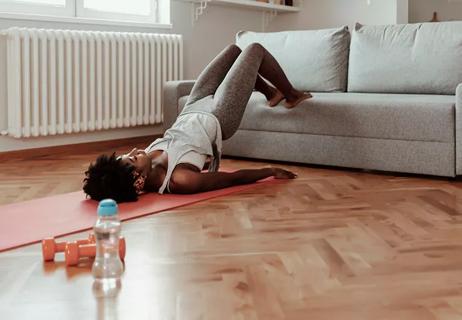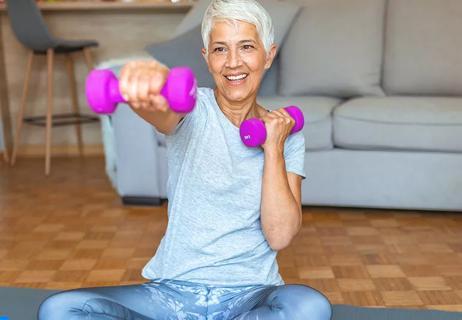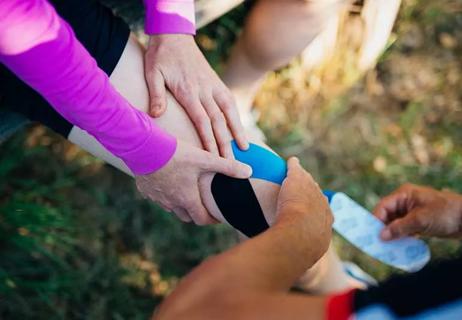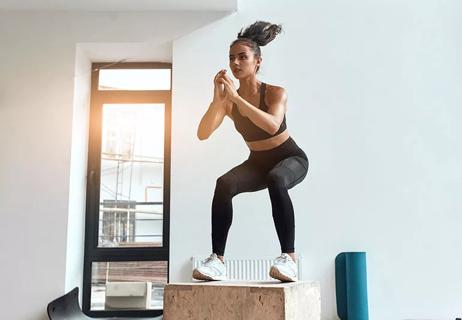Help your gymnast stay healthy and strong with proper training and nutrition

If you or your child is a gymnast, you know how gymnastics can push physical limits for strength, balance and flexibility. Many athletes in this rigorous sport end up with an injury at least once.
Advertisement
Cleveland Clinic is a non-profit academic medical center. Advertising on our site helps support our mission. We do not endorse non-Cleveland Clinic products or services. Policy
Not all injuries can be avoided, but there are ways to help prevent them. Sports medicine specialist Marie Schaefer, MD, shares preventive training and nutrition tips for gymnasts.
Your training routine has a big impact on the success of your gymnastics season. These tips can help you avoid being sidelined with an injury.
Sports have seasons for a reason. “Doing the same sport all year raises the risk of overuse injuries,” says Dr. Schaefer. “During the off-season, practice a different sport. And if you don’t have an interest in other sports, then be active and exercise without gymnastics to give your body a break.”
Your heart is a muscle, and it needs to be in top shape for top scores in gymnastics.
“Gymnasts require stamina and good cardiovascular health,” says Dr. Schaefer. “Exercises that get your heart pumping are beneficial both during and between competition seasons.”
Examples of good cardio workouts include:
The muscles in your abdomen, lower back, hips and pelvis — the core muscles — are your body’s support system. Without a strong core, the other muscles in your body are more prone to injury.
“A strong core is so vitally important for gymnasts,” says Dr. Schaefer. “A stress fracture in the lower back is a common gymnastics injury that can be prevented with proper core strength. Core strength provides lumbar support and takes stress off of your spine. This is especially helpful when you’re curving your back for dismounts and arch position.”
Advertisement
Gymnasts are more likely to get injured during competitions than during practice. Follow these steps before every meet to minimize the chances of getting hurt.
Before practices and competitions, gymnasts need to fuel up with the right foods. Combine carbohydrates like whole grains and fruit with a source of protein or fat. Nuts, nut butter, eggs and low-fat dairy are filling options that aren’t too heavy.
“Eat a small meal or snack about two hours before your event,” says Dr. Schaefer. “Some gymnasts need a carbohydrate boost during long or vigorous competitions, too. Experiment to see what makes you feel best. You want food that gives you energy but isn’t too heavy.”
Elite gymnasts have a higher risk of developing an eating disorder. If you have a child in gymnastics, keep an eye on their eating habits. Ask your child’s doctor how many calories your child needs and check for eating disorder warning signs, including:
If you think your gymnast could have an unhealthy relationship with food, talk with a doctor right away. Eating disorders can be serious and even life-threatening.
Gymnastics may not be the sweatiest sport, but hydration is still vitally important. Dehydrated muscles are more prone to injury, and dehydration can hurt your focus and stamina.
A gymnast’s hydration needs depend on age, body size and the level of competition. Usually, water alone or water mixed with a sports drink is ideal.
Start hydrating three hours before your workout. Continue sipping throughout your activity and afterward. Urine color is a good indication of how hydrated you are: It should be pale yellow and almost clear.
“Younger gymnasts often need reminders to drink, so coaches and parents should help them get into the habit,” says Dr. Schaefer. “Don’t wait until kids say they’re thirsty.”
“A proper warm-up is important in gymnastics,” says Dr. Schaefer. “All of your tendons and muscles should be warm, so you don’t get injuries from a quick stretch or pull.”
A warm-up includes some cardio to get the heart pumping blood throughout the body, followed by stretching. “Your warm-up will take at least 20 minutes to complete, so schedule time to do it before every practice or competition,” says Dr. Schaefer.
A gymnastics coach should have a warm-up routine for each athlete. Usually, these routines begin with walking and light stretching and get more intense as your muscles get warmer.
Advertisement
Encourage your young gymnast to be open about any pain they’re feeling. It’s normal for children to have aches and pains as their bones grow and change, especially when they’re involved in sports.
A sports medicine doctor can determine if their pain is an injury that needs rest and treatment or if it is something that can be treated with modifications such as a gymnastics-specific brace.
“Children go through growth spurts and stages of skeletal maturity,” says Dr. Schaefer. “Young gymnasts are prone to certain injuries and pain during these times. However, if your gymnast is complaining of persistent pain in an area, listen to them – and get them to their doctor.”
Advertisement
Learn more about our editorial process.
Advertisement

How to bounce back when a gymnastics injury has sidelined you

Follow guidelines to limit pitches, rest between games

Sports medicine physicians can get you back on track

How to exercise as you age

And 5 common mental blocks after injury

Young athletes see back, hip and leg injuries

Elastic therapeutic tape can provide extra support, but it can’t improve your stats

Proper form is important when pivoting, turning and landing

Type 2 diabetes isn’t inevitable with these dietary changes

Applying a hot or cold compress can help with pain